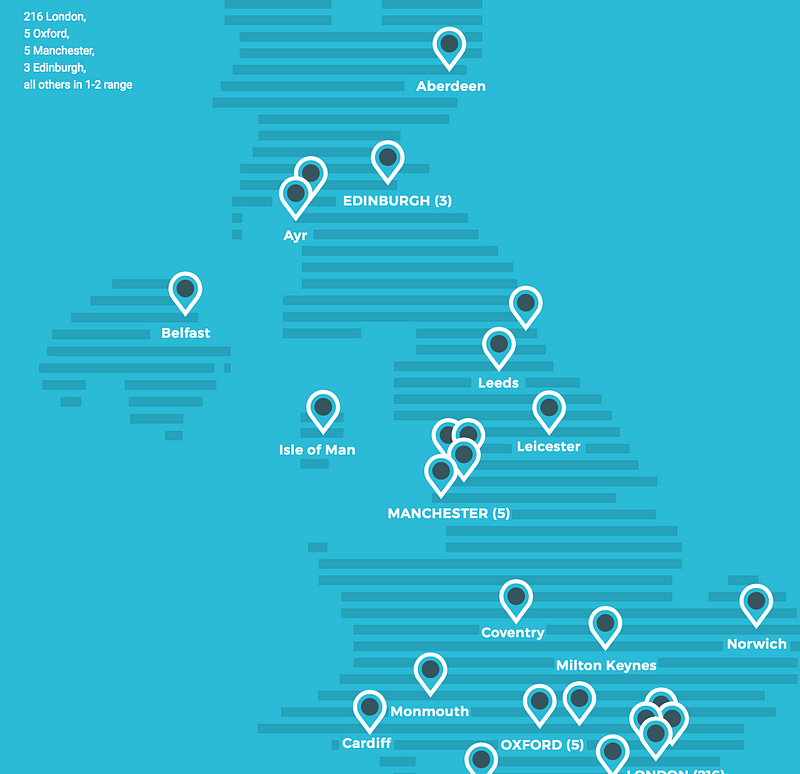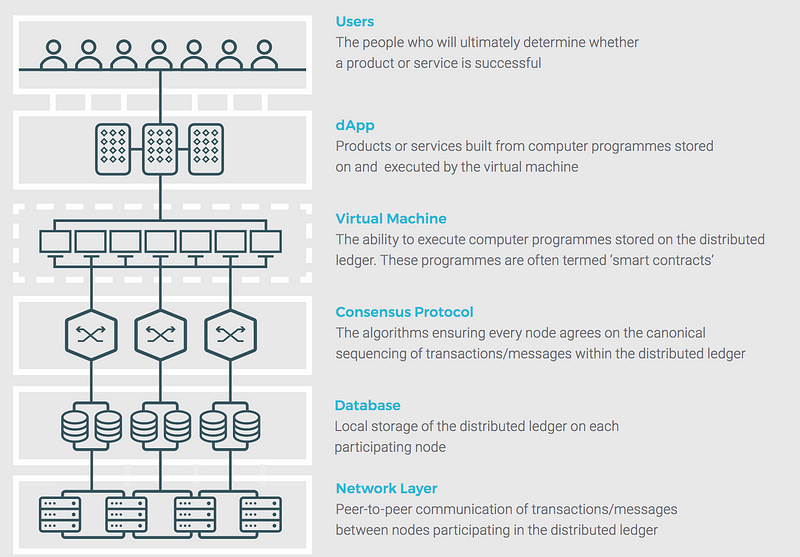For Cutting-edge Innovation in the UK: It’s London That Is Out In Front

For Cutting-edge Innovation in the UK: It’s London That Is Out In Front
I see my own home city — Edinburgh — as a great place for innovation, but London completely dwarfs anything that my city has. It is the same for virtually every city in the UK. Overall London drives a cutting-edge innovation economy, and has the ecosystem to support this.
For many of our innovations, we have struggled to get any traction in Scotland — especially within public sector — but always have been welcomed in London, and where there is a real spirit of change. For our information sharing across the public sector, we struggled to get any traction within Scotland, but were welcomed in London.

So let’s look at the most disruptive area of innovation: Distributed Ledger Technology (DLT) [here]. The graphic on the left-hand side shows the spread of companies involved in DLT in the UK, and it shows, more than most — the importance of London in the UK in respect to innovation.
In Scotland, there are six DLT companies, whereas London has 216. London has a population which is around twice the size of Scotland, but it London has over 40 times the related companies. Oxford, Manchester and Edinburgh all manage to get three of more, but are dwarfed by London. The report does not detail the companies, but in Scotland we have Wallet Services and Spiritus (from Edinburgh), Maidsafe (from Ayr) and Kippietech (from Aberdeen).
In Scotland, it is great to see companies such as Spiritus [here], Kippitech [here] and Maidsafe [here] being recognised for their innovative work, but we need 10 times more:

So, while many cities talk a good game in terms of supporting highly innovative companies, it is London that actually wants to be a city of the future, and puts plans in place.
The report UK DLT report is interesting, as it starts of abstract DLT companies into layers of operation, including within dApp — which are the programs that interact with the users and the blockchain infrastructure — the Consensus Protocols, the Virtual Machines, the Distributed Databases and the Network Layer:


If you are interested in the technology used at a platform for DLT, it is Ethereum that leads the way, with around two-thirds of all the deployments. But HyperLedger Fabric and Corda are rising starts. In our lab, we are now getting our researchers certified around Corda, as it looks an interesting platform, and well matched to the requests for e-Commerce.
There are, though, 22 companies in the UK who are rebuilding their DLT infrastructure from stratch, and not using platforms such as Ethereum and Fabric.
We, with Blockpass plc, aim to change this, and are setting up funding for more DLT companies within our lab, so watch this space. If you have an idea, get in contact with us. We are already applying DLT into food provenance, agriculture, health and construction.
Come on UK cities … innovate like never before!